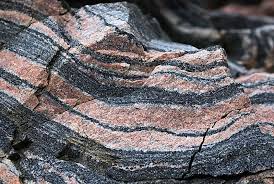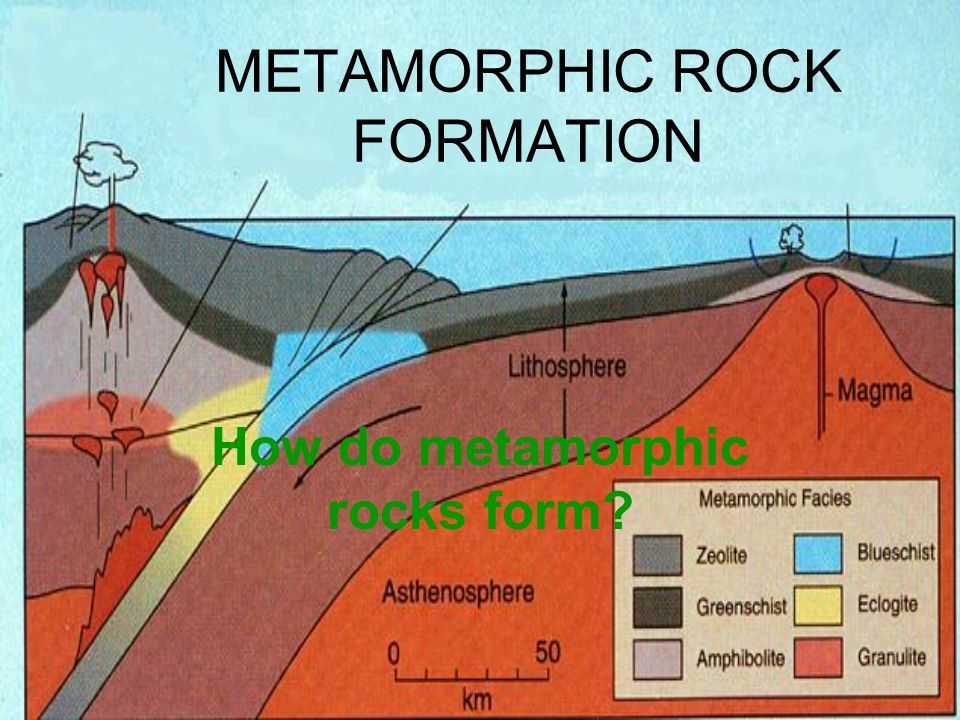Metamorphic rocks arise from the transformation of existing rock to new types of rock, in a process called metamorphism. The original rock is subjected to temperatures greater than 150 to 200 °C and, often, elevated pressure, causing profound physical or chemical changes. During this process, the rock remains mostly in the solid state, but gradually recrystallizes to a new texture or mineral composition. The protolith may be a sedimentary, igneous, or existing metamorphic rock.
Metamorphic rocks make up a large part of the Earth's crust and form 12% of the Earth's land surface. They are classified by their protolith, their chemical and mineral makeup, and their texture. They may be formed simply by being deeply buried beneath the Earth's surface, where they are subject to high temperatures and the great pressure of the rock layers above. They can also form from tectonic processes such as continental collisions, which cause horizontal pressure, friction and distortion. Metamorphic rock can be formed locally when rock is heated by the intrusion of hot molten rock called magma from the Earth's interior. The study of metamorphic rocks provides information about the temperatures and pressures that occur at great depths within the Earth's crust.

Metamorphic rock

Metamorphic rock formation